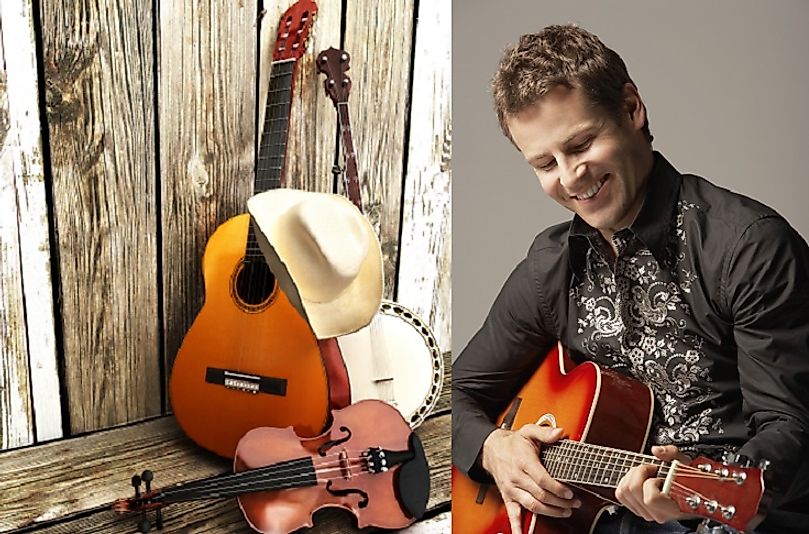What Is American Country Music?

The United States of America is a country consisting of 50 states, and covers an area of 3.8 million square miles and houses a population of 324 million. Some of the popular genres of music in the country are blues, country, rock and roll, and classic music. When the country was under colonization by European countries, African slaves played the drums and string instruments. The blues have evolved to become rhythm and modern blues. Jazz became widespread with gospel music changing to secular soul and rock.
5. Overview and Characteristics -
American country music is a genre of music especially popular in the southern region of the United States since around 1920, and a style generally consisting of variations of dance tunes and ballads. It is made up of simple harmonies accompanied by string instruments like the banjos, guitars, and fiddles. In the recent times, the term country music encompasses many styles hence difficult to tell but the following few characteristics could in the identification. Country music has a simple chord progression that could be easily learned and tells a particular story. Country songs stick to simple metaphors and instruments playing can be told as the song progresses as well as if it is sung with a southern accent. Lyrics are simple and could easily understand and remembered without difficulty.
4. Origins -
Country music's ancestors were introduced into the United States from other parts of the world as emigrants from Europe brought along their own music and instruments more than 300 years ago. After their migration, they settled in the southern part of the Appalachian mountains situated in the northern part of the Americas. West African musical traditions brought into the region by slaves also played a major role in the development of what would come to be known as Country Music.
3. Spread and Development -
The first generation of mainstream American Country Music was recorded in the early 1920s, and throughout that decade, several musicians recorded these and various blues songs. Between 1930 and 1940, radios became the popular source of entertainment, and different shows had been set up for the playing of the country songs which had grown famous all over the south from Chicago to California. Movies also created from the Hollywood used the country music as soundtracks thus made them widely known. After the second world war, various classes like gospel music and others raw music and have grown progressively over the years both secular and gospel music. On top of that, they have been received well by the audience, and they also offer support which acts as a motivation to the artists.
2. Notable Artists, Past and Present -
Several notable musicians have taken up country music as their career, and listening to their songs gives us a general idea of what this genre of music is all about. In recent years, some of these have included Carrie Underwood, the Dixie Chicks, Vince Gill, Tim McGraw, Kenny Chesney, and George Strait. Notable legendary practitioners from earlier generations also contributed to the rise and growth of country music, including the likes of Hank Williams, Patsy Cline, Loretta Lynn, Dolly Parton, Kenny Rogers, Johnny Barfield, and John Denver
1. Greater Significance and Legacy -
Country music is often seen as a genre of music which could be sung to express feelings, or to explain a particular situation in life. It helped lead to the development of other genres of music as divergent from traditional country music as hip-hop and rock, as well as most other genres of contemporary American music. Country music also highlights the way of life of a particular community. For example, the southern regions of the Appalachian Mountains and the ranches and cowboy culture of Texas have grown popular in the public mind due to exposure to country music. The music has also helped to build the careers of different people over the years from the first generation in 1920 until the current sixth generation.







